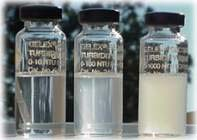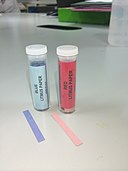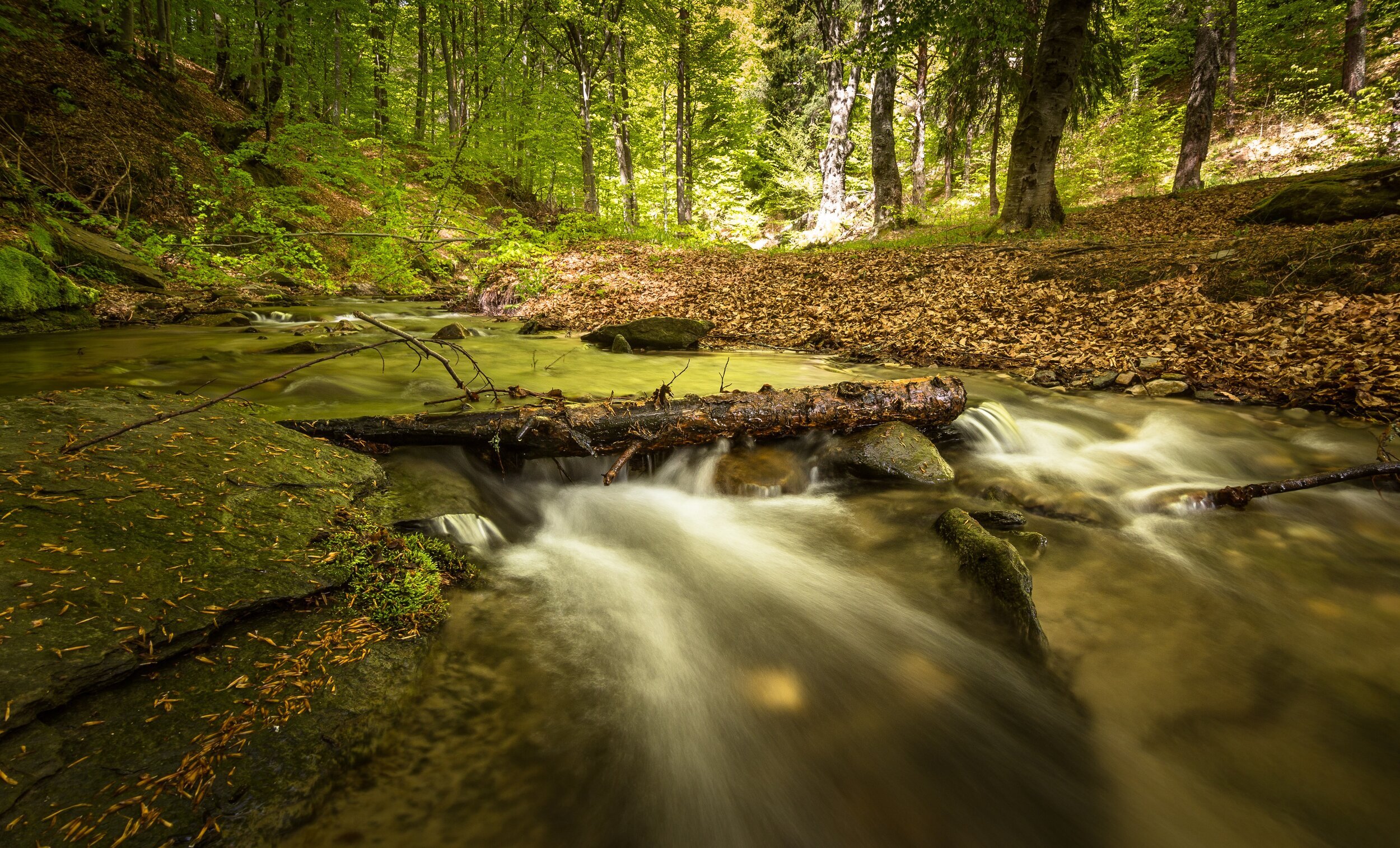A Guide to Measuring Stream Water Quality
By Kevin Guo
Water is one of the most important resources on Earth that all plants and animals must have to survive. In order to keep a sustainable supply of usable water, we must measure and maintain the water quality of our water sources. To get a measure of the overall water quality of a water system, scientists often examine streams because they are the source of most bodies of water like oceans and lakes.
This article explores stream water quality, how it is measured, and its significance and steps you can take to help maintain the quality of our water in your community.
What is stream water quality?
Water quality is the measurement of physical, chemical, and biological factors of streams to monitor the environment and maintain the health of the organisms that rely on it.
How is water quality measured?
To measure water quality, scientists must consider a variety of factors to gain an overall perspective of a stream’s health. The most common factors used to determine water quality include:
Temperature
Water temperature measures the amount of thermal energy, or how much heat, in the water in a stream. Temperature is usually measured with a thermometer and uses the units Fahrenheit or Celsius. The temperature of streams are determined by the location of the stream, its surrounding landscape, and the climate of the surrounding area [4]. Temperature influences the water’s conductivity, dissolved oxygen of the water, and the types of animals that can live in the water. One common example of how water temperature affects aquatic life is demonstrated by salmon. Kokanee salmon, found in Lake Nantahala of North Carolina [7], are very sensitive to water temperatures and prefer temperatures of 12°C and cannot survive in temperatures above 16°C [2]. You can measure water temperature with your own thermometer or purchase one here.
Photo by Jarosław Kwoczała on Unsplash ➝
Dissolved oxygen
Disolved Oxygen Meter
Dissolved oxygen measures the amount of oxygen in the water available to aquatic organisms. The oxygen in water usually comes from the atmosphere or as a product of photosynthesis from aquatic plants. Dissolved oxygen is increased when there is turbulence or “churning” that mixes air into the water or when there are abundant aquatic plants and algae that produce oxygen in the water. Dissolved oxygen decreases when there are more animals using the oxygen in water and when there is an excess in organic matter. Dissolved oxygen can be measured by sensors and uses the units milligrams per liter (mg/L) or parts per million (ppm), which are approximately the same. Average dissolved oxygen in streams ranges from 0 mg/L to 18 mg/L [1]. Levels above 6 mg/L are needed to support most aquatic life. You can purchase a kit to measure dissolved oxygen here. Actual dissolved oxygen sensors are a great deal more expensive and require training to use.
Macroinvertebrates
Macroinvertebrates are small organisms living in streams that you can see without a microscope that effectively indicate stream water quality. In order to measure water quality with macroinvertebrates, scientists usually observe the number of different types of organisms living in the water. The types of organisms living in water is determined by the temperature of water, dissolved oxygen, and the presence of pollutants. Good water quality (high levels of dissolved oxygen and low levels of pollutants) is indicated by large numbers of riffle beetles, mayflies, and gilled snails, which are intolerant to pollution. Poor water quality (low levels of dissolved oxygen and high levels of pollutants) can be indicated by an abundance of blackfly larvae, pouch snails, and leeches [6]. You can find a guide to measuring water quality with macroinvertebrates here. You can find more information on mcroinvertebrates at National Park Service
Image: Macroinvertebrate Groups, National Park Service, 12 Sept. 2020. ➝
Turbidity Measurement
Turbidity
Turbidity measures how clear or murky the water in a stream is. Turbidity is impacted by the concentration of fine particles, such as clay, silt, algae, and organic matter, in the water. Water becomes murky due to excess sediment being washed into the stream from runoff, stream bank erosion, algae growth, or aquatic animals stirring up the stream bed. Stream turbidity can be lowered by coagulates (substances that cause particles to clump up) or by reducing runoff. Turbidity is measured by measuring the amount of light that travels through a water sample and is measured in
Photo from Wikimedia Commons ➝
Photo by Kevin Guo ↓.
Secchi Disk
Secchi Disk
Nephelometric Turbidity Units (NTU). NTU is a measurement of the intensity of light scattered by the water sample. The average stream turbidity is between 0 NTU and 10 NTU [5]. You can make your own tool to measure turbidity, called a Secchi disk, here. To use a Secchi disk, you lower it into a body of water until the disk is no longer visible. Then measure the depth of the disk from the surface of the water and convert to NTU using this chart!
Litmus Paper
PH
pH, also known as potential of hydrogen, measures the stream water acidity (concentration of hydrogen ions) and basicity (concentration of hydroxide), which are opposites. The more hydrogen ions present, the more acidic the water is and the more hydroxide present, the more basic the water is. pH of streams is influenced by the types of rock the water encounters, precipitation, and organic matter in the water. The acidity of streams increases when carbon dioxide (CO2) levels in water rise or when acid rain flows into the water. Water can be made more basic by adding basic substances, such as hydroxide, or when aquatic plants remove CO2 from the water. pH is usually measured by sensors or a special paper called litmus paper and uses a scale from 1 to 14, where 1 is acidic and 14 is basic. Most streams have a pH of 6.5 to 8.5 [3]. You can purchase litmus paper to measure water pH here.
Photo from Wikimedia Commons ↑
Why is water quality important?
Measuring water quality allows us to take the right measures to protect our most valuable resource and keep ourselves safe. In order to determine whether water is safe or not, scientists have set numerous standards for what makes water quality good. Wastewater systems and treatment plants must follow these standards to keep the water in our homes safe to use. These standards cover a variety of potential threats in water such as harmful bacteria, metals, and other contaminants. All of the chemicals and waste in the water that leaves our homes or are dumped into waterways must be removed from the water and meet water quality standards before the cycle from bodies of water to communities restarts.
Orange County in North Carolina provides a great overview of water quality treatment and standards which you can learn about here. In addition to keeping people healthy, water quality standards are also used to protect the ecosystems that rely on streams. When water in our environment does not meet these standards, water quality engineers take action to prevent the water from harming the community and work to ensure future water safety.
What can you do?
Since stream water quality affects us all. Not just scientists, but everyone can do something to make sure our water is safe and to keep it safe in the future! Some ways that you can get involved are described below:
Become a citizen scientist
With over 40,000 miles of stream in North Carolina alone, it can be difficult for water quality engineers to monitor the water quality of every stream. However, anyone can volunteer to become a citizen scientist for their local stormwater management agency and help their communities by recording important data. You can find out more about your regional water quality operation here.
Avoid flushing these down the toilet
Although water treatment plants remove harmful substances from our water, flushing and washing certain substances down the sink can lead to harmful pollution in our waterways. Keep our water safe by avoiding flushing or dumping toxic chemicals, oil, grease, medication, and solid substances down the toilet or into the sink or garbage disposal. To learn more about how garbage disposals impact the environment, you can read this article.
Protect our resources
While water is a seemingly endless resource, clean fresh water sources are actually decreasing and demand for water is increasing. To prevent further depletion of water sources, we can reduce water usage at home by turning off faucets when we’re not using them, limiting your time in the shower and frequently checking for leaks around your house.
Picking up trash
As water pollution in streams becomes an increasingly urgent issue, it is important to take action to prevent further pollution that harms the environment. Although there are many ways to reduce water pollution, one of the simplest and most direct methods is to pick up trash around and in the streams. Since storm drains lead straight into streams without treatment, any litter or debris on the road will get washed into the streams, rivers, and lakes.
It’s up to us to keep our waterways clean
Water quality is the overall health of a body of water or water system. Scientists observe a variety of factors to measure water quality including temperature, dissolved oxygen, macroinvertebrates, turbidity, and pH. To keep water healthy for the population, scientists set standards that wastewater systems and treatments plants must follow. Anyone can help protect waterways and preserve water quality by becoming a citizen scientist to record measurements or reduce pollution. In all, stream water quality is important to keeping our water healthy so we can keep ourselves healthy.
Photo by Anton Atanasov from Pexels
Resources:
“Dissolved Oxygen and Water.” USGS, www.usgs.gov/special-topic/water-science-school/science/dissolved-oxygen-and-water?qt-science_center_objects=0#qt-science_center_objects.
“Kokanee Salmon: Oregon Department of Fish & Wildlife.” Oregon Department of Fish & Wildlife, myodfw.com/fishing/species/kokanee-salmon.
“PH and Water.” USGS, www.usgs.gov/special-topic/water-science-school/science/ph-and-water?qt-science_center_objects=0#qt-science_center_objects.
“Temperature and Water.” USGS, www.usgs.gov/special-topic/water-science-school/science/temperature-and-water?qt-science_center_objects=0#qt-science_center_objects.
“Turbidity and Water.” USGS, www.usgs.gov/special-topic/water-science-school/science/turbidity-and-water?qt-science_center_objects=0#qt-science_center_objects.
“Water Quality.” Utah State University, https://extension.usu.edu/waterquality/learnaboutsurfacewater/propertiesofwater/aquaticmacros.
“North Carolina Salmon Fishing.” All About Fishing, www.aa-fishing.com/nc/north-carolina-salmon-fishing.html#:~:text=Lake%20Nantahala%20is%20the%20only,locked%20version%20of%20sockeye%20salmon.










